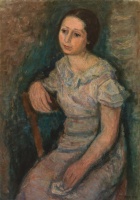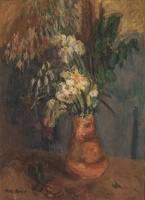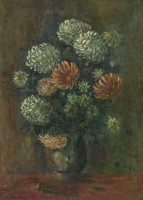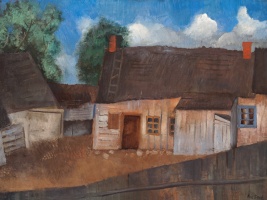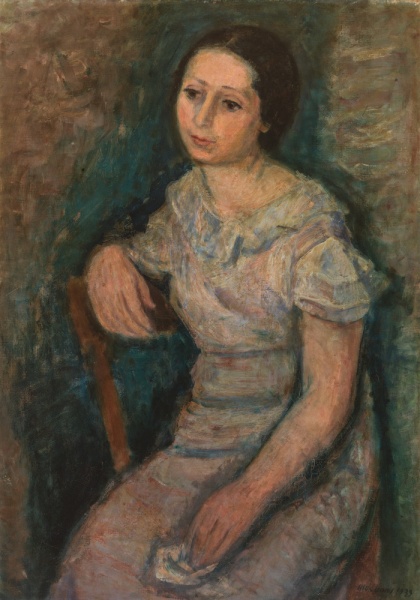

A Woman with a Light Dress (Wife's Portrait)
| Author: |
Max Band (1900–1974)  |
| Created: | 1933 |
| Material: | canvas |
| Technique: | oil |
| Dimensions: | 92 × 64 cm |
| Signature: | bottom right: Max Band 1933 |
Family and motherhood. Unlike Christianity and Islam, Judaism is an ethnic religion. The role of the mother and the family are very important: according to halakhah, a person born to a non-Jewish mother cannot be a true Jew. Every Jew must create a family, because the Old Testament says: ‘God blessed them and said to them, “Be fruitful and increase in number; fill the earth and subdue it!”’ (Genesis 1, 28). The family is one of the most important institutions of the Jewish community, and the wife and mother are the main guardians of Jewish traditions in the family. In the Litvak tradition, the phrase ‘a Yiddish mamma’ symbolises a mother’s infinite care and love, which is praised in Yiddish songs and depicted in art.
Max Band was orphaned at an early age, and later he focused on the family both in his personal life and in his work: his wife and son were the most important models for his portraits and characters in everyday and biblical scenes. His beautiful dark-eyed wife is also depicted in his Portrait of a Woman. Arbit Blatas, who grew up in Kaunas, loved his mother dearly. (She died in the Bergen-Belsen concentration camp.) The theme of motherhood was a key motif in works by William Zorach, who emigrated to America as a child; at the beginning as a ‘Yiddish mamma’, and later his wife with their daughter and son.
Text author Vilma Gradinskaitė
Source: Law firm Valiunas Ellex art album MORE THAN JUST BEAUTY (2012). Compiler and author Giedrė Jankevičiūtė, STORIES OF LITVAK ART (2023). Compiler and author Vilma GradinskaitėExpositions: “More Than Just Beauty: The Image of Woman in the LAWIN collection”, 12 October – 11 November 2012, National Gallery of Art, Vilnius







